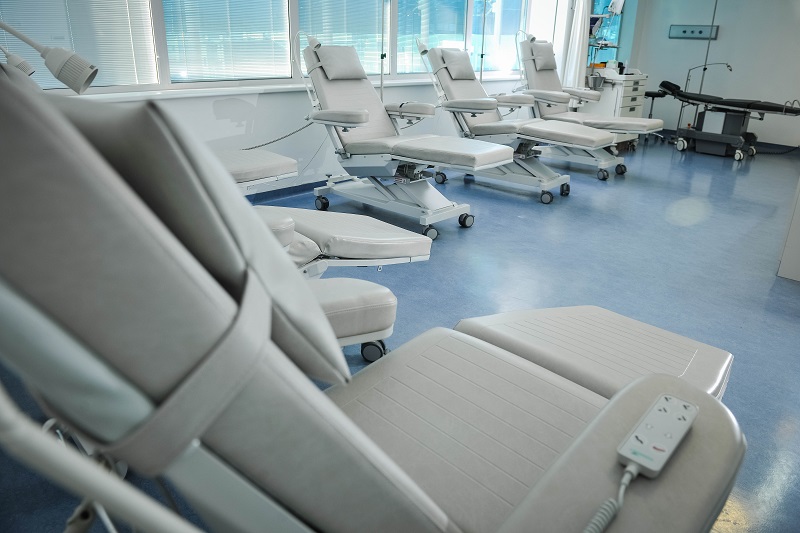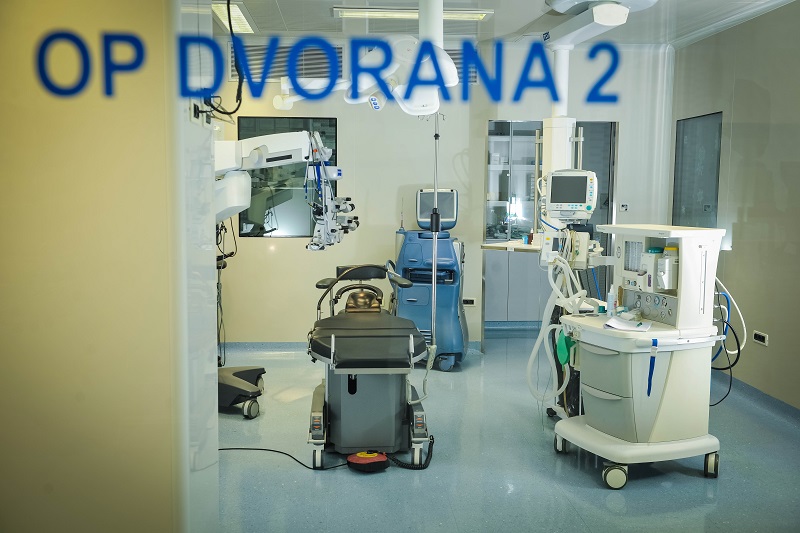
Ask For More Information
- E-mail: info@svjetlost-sarajevo.ba
- Phone: +387 33 762 772
- Dr. Mustafe Pintola 23
- 71000 Sarajevo- Ilidža
Special Hospital for Ophthalmology Svjetlost Sarajevo - Branch 1
- E-mail: klinika@svjetlost-sarajevo.ba
- Phone: +387 33 821 919
- Bolnička 8A
- 71000 Sarajevo
Recovery and prognosis of success
In addition to well-executed operations which other factor is of crucial importance to the success of transplantation?
It is extremely important a detailed postoperative monitoring of patients, because without frequent postoperative controls and the necessary modifications in treatment transplant rejection can occur and be overlooked. The patient should be aware that after the operation one should regularly instill eye drops to make sure that the operation is successful at the maximum.

What is the therapy after transplantation?
Postoperatively all patients use combination of steroid and antibiotic drops and ointments, fortified by gels and artificial tears to lubricate the eye. In the case of graft rejection, stronger doses of corticosteroids are used in the form of increased local and / or systemic corticosteroid therapy (in the form of pills). Patients are monitored on a daily basis during the first week, then weekly through the first postoperative month, and eventually on a monthly basis until the end of the first year, and more often only if necessary.
What should every patient know after transplantation has been performed?
Each patient after transplantation of the cornea must know that the rejectioncan occur at any time in life. If any deterioration of visual acuity, blurred vision or eye redness occur, or there is a suspicious discharge, they should immediately contact the clinic.
Are the doctors of Svjetlost available at weekends in an emergency?
Our doctors are available available and on call 24 hours a day including weekends.
The success of the surgery and the prognosis of survival of corneal transplants

What determines the success of the surgery and the prognosis of survival of transplants?
It depends on the preoperative diagnosis, method of operation and precise post-operative monitoring of patients. For low-risk diseases the success rate is over 90%, while in the high risk patients it is of 30-70% depending on the particular corneal disease. The transplant rejection, which is the main reason for the failure of the operation, is significantly less frequent after lamellar transplantation if compared with the perforated transplantation. It is of great significance also the experience of the surgeon, not only with regard to the operation, but also for postoperative monitoring and adjustment of therapy that is different depending on the type of disease. Finally, if there is a lack of good cooperation with the patient and the prescribed therapy is not properly applied, the transplant may also be affected. Among the most important factors for the success of the surgery is the preoperative condition of the recipient's eye and preoperative diagnosis. Corneal transplantation is generally the most successful form of transplantation and usually after the operation it requires only local therapy with drops. This high success of transplantation is due to the cornea which can be defined as "immune privileged tissue" where the rejection of foreign tissue very rarely happens. The success is also dependent on possible presence and extent of blood vessels in the cornea and inflammation of the eye.
In which diseases the transplantations are most successful?
Among the most successful transplantation are those with keratoconus, corneal dystrophy (Fuchs) and degeneration (the success rate is of more than 90%) and non-vascular scarring of the cornea and pseudophakic keratopathy (80%). In patients suffering from postkerathic corneal scarring, ulcer, or in repeated corneal transplantations the success rate falls to about 60%.
Which corneal statuses have the worst prognosis?
The worst prognosis is for patients suffering from corneal combustion, intensive vascularised scars, very "dry" eye or autoimmune diseases such as Stevens-Johnson syndrome (the success rate is at about 20-30%).






